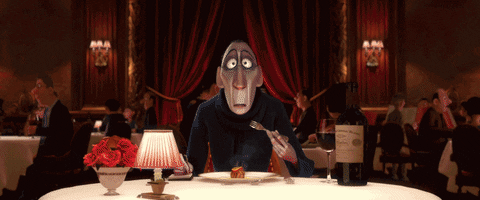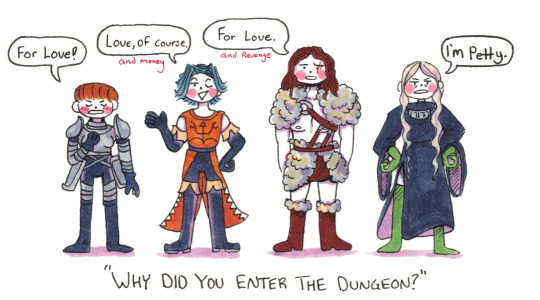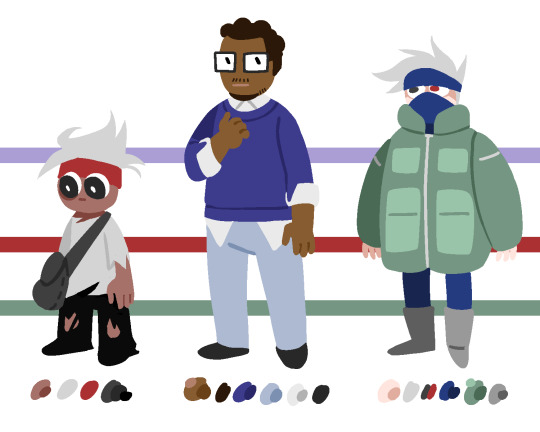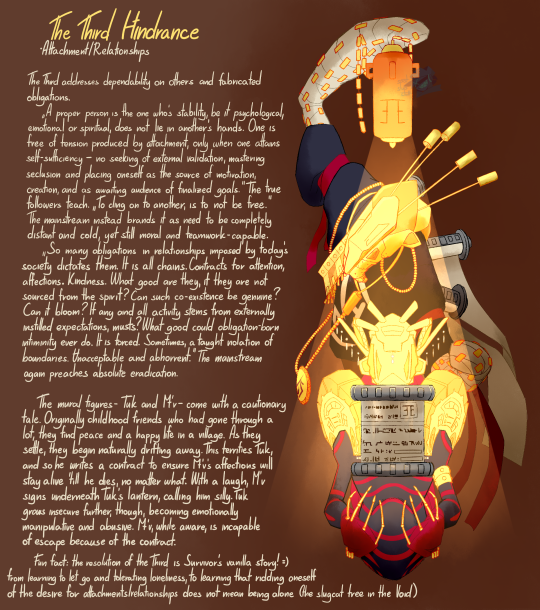#design philosophy
Note
It seems in competitive games with a healthy pro/esport community, balance is often different between the pro and casual levels. E.g. Class A tends to dominate Class B at the pro level, but Class B tends to dominate Class A at the casual level. If you try to make Class A relatively more powerful to make the experience better the majority of players, it will only exacerbate the imbalance among the minority of pros (which damages the health of the pro community). How do you prioritize/negotiate?
In such situations, it's important to figure out why professional players are able to realize so much more potential with a particular class/character/build/etc. while more casual players cannot. Generally, that means the additional performance must come from two things at the pro level - a high bar for execution (e.g. difficult timing or physical dexterity), and/or extraordinarily complex strategy that likely changes in real time (e.g. having a huge number of moves available at a given time and needing to choose the right move to use on the fly).

Once we identify what separates the pros from the recreational players, we can figure out what our design goals for the classes are and formulate a way to reach those goals. For example, if we wanted to make Class A from your example perform better against Class B at the casual level, we don't necessarily have to modify the power of Class A or Class B. In such a situation, I might lower the bar of execution so the optimal Class A strategy is more lenient and easy to perform. I might make UX modifications to encourage the player to choose the right move to use in the given situation. This would not necessarily change the matchup at pro levels of competition, but would have large effects at the recreational level. Similarly, if I wanted to isolate changes at the pro level, I would look to modifying game factors that have very high execution and/or strategic requirements to perform.

If a designer can figure out what differentiates two groups of players, they can design around those distinctions to target one specific group without affecting the other. I can tune the game experience for one group along a particular variable without necessarily touching the other group in question. This approach is the design principle I like to call "orthogonality". We don't always have to go only forward or backward along the same line - we can go sideways too.
[Join us on Discord] and/or [Support us on Patreon]
Got a burning question you want answered?
Short questions: Ask a Game Dev on Twitter
Long questions: Ask a Game Dev on Tumblr
Frequent Questions: The FAQ
47 notes
·
View notes
Text
On a shelf in the library are very old books that tell of another past than the one the dreamer has known. Dreams, thoughts and memories weave a single fabric. The soul dreams and thinks, then it imagines.
Gaston Bachelard, The Poetics of Space
#gaston bachelard#bachelard#philosophy#space#architecture#interior design#design philosophy#memory#library#libraries#books#bibliophile#booklover#dreams#memories#imagination
14 notes
·
View notes
Text
Winning Without Work
People who think a good necromancer build is boring are right and wrong.
People who think a good flame aura build is boring are right and wrong.
The core disconnect?
Magic: the Gathering is two games. One of them has an opponent. One of them is more purely creative.
"A Good Necromancer Build" that lets you walk around Path of Exile or Diablo 3 just picking up treasure because your army of skelemans kill everything in a 2-mile radius? That is the fruits of your labor. You have already been playing the game you wanted to play.
To call an aura build "winning without work" is to ignore the work that goes into developing and optimizing a build.
And certainly, sometimes you not only play a work-averse build but also look up how to build the work-averse build in an online guide. Or sometimes the game's systems are clean enough or broken enough that you can get to a state of no challenge and no interaction without getting to do any actual tinkering. The "mileage" in "YMMV" here is a mix of how much work you want to do in the first place (sometimes you really are in the action RPG to turn your game off) and how much time it takes to get into the (in)action.
Like;
There's a whole subgenre of games that are optimization. Kind of like how 7 Wonders was like the Oops All Drafting to M:tG's drafting format. If you love Factorio but consider aura builds and pet builds a total waste of time I feel like there's something unexamined, there. Were your parents eaten by zombies and that's why you hate them?
If so please tell me so I know to board my windows before they arrive.
On the other end, I do feel like there's a Game Dev endpoint to this where you get to a game like Path of Exile that is both Character Optimization Game and Battle Action Game and you spend time on optimizing fun into your own gameplay experience; recognizing how much you want to press buttons during gameplay and making a situation where pressing buttons that precise amount is how you maximize your damage and gains.
2 notes
·
View notes
Text
You can't create a positive play space if all you do is punish bad behavior.
If you've been in TTRPG or LARP spaces, the unfortunate odds are you've run into bad actors or missing stairs. Many communities I've been in have attempted to combat their behaviors directly with policy or safety tools.
But those things are never enough on their own.
If you're a game runner and your approach to ensuring safety extends only to setting boundaries, all you have done is provide a road map for how far those boundaries can be tested. Abusers who enter your space can--and will--look for the grey areas they can operate in and you will spend your time playing whack-a-mole with the incidents that pop up. It's an issue of approach, and you have to think holistically, because the exhausting truth of curating TTRPG / LARP communities is that every little decision you make matters.
Behavioral psychology teaches us, on a very basic level, that we get the behaviors we reward or make easier to exhibit. This extends far beyond what a game runner might choose to consciously encourage. What does your game system provide mechanics for? What is your lore like? What expectations are you setting for new community members, and what kind of person or player are all of those elements going to appeal to? These are all things you need to be conscious of, and that list is by no means exhaustive.
Community Standards
If what you're looking for is an inclusive community with mutually supportive members, start by setting expectations at the door. Any version of "don't be bad to people" centers the discussion around what members of your play space are "allowed" to do and what "counts" as bad, and when that's what you're focused on everyone has already lost. Instead, state the goal that members of the community will be good to each other and look for ways to be supportive. This will keep the focus on how folks in your play space can be good to each other, what their needs are, what might make them uncomfortable, and will ultimately lead toward a more constructive conversation. On the other hand, if someone takes issue with that as an up-front standard, that's a pretty solid litmus test indicator that they would have caused issues down the line.
Lore & Setting
This topic could be an entire post on its own but the setting and lore of your game world can be a critical make or break element for the whole community experience. As an example, I've been in multiple LARPs put on by a single company whose setting put virtually every player culture in fundamental conflict with each other and had players calling each other made up in-game slurs, whose runners would go on to ask why their community had minimal POC in it.
Conversely, I've been in plenty of games whose lore set the players up to support each other. In my own LARP, players choose from one of five cultural backgrounds but to form essentially a witchy peace corps, finding ways to come together and promote unity and cultural understanding in the world. Players routinely explore the cultural wrongdoings in the game's history, but within the scope of treating each other as allies in a shared mission.
If you boil this down to "setting your community members up roleplaying enemies makes them act like enemies and setting them up roleplaying allies makes them allies," that in a bubble is fairly obvious advice. But taking the next step here is realizing that no amount of mandates or policy will save a situation where community members have been set against each other with the lore and setting. Especially not with larger player counts. You can say that your game is inclusive of POC and LGBTQ+ folk, but if your lore mirrors real world bigotry or employs bigoted tropes and is going to focus roleplay along those lines... no it isn't. You can say that your game has no tolerance for harassment, but when you have set up players for combative relationships based on deep seated mutual wrongdoings... harassment will occur.
The lore and the setting in use will shape the interactions of your community members. If you are a game runner it is up to you to really put the thought in during pre-production to anticipate how. If you are a player entering a space, be mindful of situations where painful interactions are being driven by the game lore, and take steps to insulate or protect yourself. Ask for change if you can, and leave the game if you have to.
Game Mechanics & Player Behavior
When choosing a game system to play in, always look at what tools that system gives players, staffers, and game runners for interacting with scenes and contributing to the shared experience. Dungeons & Dragons, being a very common example, is built for wargaming. The mechanics emphasize combat and financial reward with other elements of play (or roleplay) serving in an ancillary role to encourage the central gameplay experience of: fight things, get loot. If you choose that as a system you are going to appeal to and attract players who want to… fight things, and get loot. Why expect otherwise? While that drive isn't inherently bad, there are few mechanics in that system that directly encourage collaborative play outside of maximizing effectiveness--often combat effectiveness--with party composition, to gain more loot and XP. These ultimately selfish rewards can only ever indirectly incentivize teamwork insofar as that teamwork benefits the individual.
Contrast this with Masks: A New Generation, a game whose mechanics are built around exploring the experience of being a teenager through the lens of a superhero. Where character advancement is driven by failure to encourage ineffective or exploratory play and provide catch-up mechanics to less effective character builds. Where core mechanics exist for changing character stats in reaction to the personal influence one character has over another. Where character "health" is based on their emotional state and you can gain advantage on your rolls with a mechanically tracked expression of your team's cohesion. The mechanics of the system itself emphasize collaboration, emotional regulation, and paying attention to interpersonal dynamics. By choosing such a system, you have chosen to ground your experience in those things.
This can be one of the trickiest things to balance when you are creating your own system, because it influences so many decisions you might make. Every step of the way, be thinking:
"How does this incentivize players to work together?"
"How can we make personal rewards also community rewards?"
"What might make this inaccessible?"
"What is the core gameplay loop and who will that appeal to?"
"What kind of scenes is this game equipped to run, and what mechanics can players leverage to interact with them?"
These are the kinds of questions that will shape play itself, which in turn shapes the community and the behavior in it.
Final Words
As I've mentioned this is by no means an exhaustive list, but it is meant to be illustrative of my ultimate point: when it comes to creating a positive play space, everything matters. Each little piece of the play experience you cultivate is a brick in the wall. It may seem exhausting to maintain awareness of the impact of seemingly trivial details, and frankly... it is! But that's the nature of the beast, and it's up to you to determine whether the reward is worth the effort and whether creating a play space is right for you. Well meaning inattention in creating a social contract for others to buy into can cause as much damage as malice. If that matters to you, if you really care about the people in the community you're trying to create, don't fall into the trap of thinking that all you have to do is set up a comprehensive policy document. You do need to have that, it is important... but it isn't everything.
2 notes
·
View notes
Text
The thing about game development
is that right now we exist in a space where games are being developed on a 5-10 year cycle. It's not unusual for games to be in development for 6 or 7 years. There was a post talking about this and I was going to reblog off of it but I can't find it so here we are.
And the issue here, right, is that our thoughts on game development-- the trends, the graphics, the tools, the mechanics-- they're all 6 or 7 years "out of date" at this point. The games that are cutting-edge, coming out right now? Those games are built off of mechanics and styles from half a decade ago. Midnight Suns [2022], the Marvel game that is pretty good? It's very bluntly based off of Xcom 2 [2016]'s central design philosophy. (I know it's also based off of Chimera Squad [2020] but that game's mechanics are also from 2016 lol.) That new Suicide Squad game that people are posting pictures of? Many people have already pointed out that it clearly resembles PUBG [2017] and the many, many games (such as Fortnite [2017]) that ape its style. We're literally experiencing the growth of the video game industry through the process of fucking time dilation.
What we really need, see, is a form of game development that takes like... one year. Maybe two. Even the indie sphere's greatest hits are known for taking around 3 years to develop (a better number, but still not a good number). Can you imagine if games iterated off of each other on a yearly basis? We'd see industry growth and design philosophy shifts nearly FIVE TIMES as fast if you think about everything iterating at the same "rate." Can you fucking imagine??
Anyway. I think that you should make a cool little game. Something tiny and niche and awesome that doesn't take you that long to make. Please. I want to play it so badly. Send it to me. Let's make weird flash-like games again. Let's make silly platformers again. Let's make clicker games again.
I'm tired of all this.
#game#design#design philosophy#game development#video games#art#this should apply to other industries as well tbh
1 note
·
View note
Text
Perspective for thought: 001
Words from Finnish architect Juhani Pallasmaa about computer-aided design.
ㅤㅤㅤ
Do computers help more than they hinder? Or do they hinder more than they help? If you asked 100 people, you’d probably get 100 different responses. Everyone will have a different relationship with technology — and beliefs about the benefits of using it as an aide in creative work.
One viewpoint I’m fascinated by is in the excerpt below from Architect Juhani Pallasmaa. Described as a “soft-spoken Finn with big ideas (1),” he shares his perspective on computer-aided design.
For ease of reading (to avoid a wall of text), the passage is separated into three parts:
ㅤㅤㅤ
“The computer is usually seen as a solely beneficial invention, which liberates human fantasy and facilitates efficient design work. I wish to express my serious concern in this respect, at least considering the current role of the computer in education and the design process.
Computer imaging tends to flatten our magnificent, multi-sensory, simultaneous and synchronic capacities of imagination by turning the design process into a passive visual manipulation, a retinal journey. The computer creates a distance between the maker and the object, whereas drawing by hand as well as working with models put the designer in a haptic contact with the object, or space.
In our imagination, the object is simultaneously held in the hand and inside the head, and the imagined and projected physical image is modelled by our embodied imagination. We are inside and outside of the conceived object at the same time. Creative work calls for a bodily and mental identification, empathy and compassion.”
— The Eyes of the Skin: Architecture and the Senses (2)
ㅤㅤㅤ
ㅤㅤㅤ
BACK MATTER:
(1) Craven, Jackie. “Juhani Pallasmaa, The Soft-Spoken Finn With Big Ideas.” ThoughtCo, Feb. 16, 2021, www.thoughtco.com/juhani-pallasmaa-finnish-architect-177421
(2) Pallasmaa, Juhani. “The Eyes of the Skin: Architecture and the Senses,” Wiley, 1996, https://www.goodreads.com/book/show/398621.The_Eyes_of_the_Skin
ㅤㅤㅤ
###
#spilled thoughts#Juhani Pallasmaa#computer aided design#design philosophy#spilled words#spilled writing
0 notes
Text
Find Your Design Philosophy with Minimalism vs. Maximalism
In the world of interior design, finding your design philosophy is akin to discovering your personal style – it's a journey of self-exploration, experimentation, and self-expression. Two prominent design philosophies that often polarize enthusiasts are minimalism and maximalism. While minimalism embraces simplicity, restraint, and clean lines, maximalism celebrates abundance, eclecticism, and bold expression. Let's delve into the essence of minimalism and maximalism, and explore how you can find your design identity amidst these contrasting philosophies.
Embracing Minimalism: Less is More
Minimalism is more than just a design aesthetic; it's a way of life that advocates for simplicity, clarity, and intentionality in every aspect of design. Minimalist interiors are characterized by clean lines, uncluttered spaces, and a neutral color palette, creating a sense of calm, serenity, and balance. Minimalism encourages us to focus on what truly matters and eliminate excess, allowing space for thoughtfulness, mindfulness, and appreciation of the beauty in simplicity.
Celebrating Maximalism: More is More
On the other end of the spectrum lies maximalism – a design philosophy that revels in opulence, extravagance, and abundance. Maximalist interiors are bold, vibrant, and eclectic, featuring an eclectic mix of colors, patterns, textures, and styles that exude personality, creativity, and joie de vivre. Maximalism encourages us to embrace our individuality, express ourselves boldly, and surround ourselves with objects and spaces that bring us joy, inspiration, and a sense of adventure.
Finding Your Design Identity
So, how do you find your design identity amidst the contrasting philosophies of minimalism and maximalism? The key lies in self-reflection, exploration, and experimentation. Take the time to consider your lifestyle, preferences, and values – do you gravitate towards simplicity and order, or do you thrive in environments filled with color, texture, and energy? Explore different design styles, aesthetics, and influences, and pay attention to what resonates with you on a visceral level.
Embracing Balance and Harmony
Ultimately, the beauty of design lies in its ability to evolve and adapt to the unique needs and tastes of individuals. While minimalism and maximalism represent two extremes on the design spectrum, there is room for nuance, hybridity, and personal interpretation. Strive to strike a balance between simplicity and complexity, restraint and abundance, order and chaos, creating spaces that reflect your personality, values, and aspirations.
Your Journey Begins at IIFD
At the Indian Institute of Fashion and Design (IIFD), we celebrate diversity, creativity, and individuality in design, empowering students to find their unique design identity and express themselves authentically. Our interior design courses offer a supportive and nurturing environment where students can explore different design philosophies, experiment with diverse aesthetics, and hone their skills as designers. With a curriculum that encourages critical thinking, creativity, and hands-on learning, IIFD prepares students to embark on a journey of self-discovery and innovation in the dynamic world of interior design.
Ready to explore your design philosophy and unleash your creativity? Explore interior design programs at one of the best Interior Designing Colleges in India IIFD and discover the path that resonates with your unique vision and style.
Contact on at +91 9041766699 today to learn more about our courses and start your journey toward a fulfilling and rewarding career in interior design. Together, let's find your design identity and create spaces that inspire, delight, and reflect who you are.
#Design Philosophy#Designing Philosophy#Philosophy#careers#iifd#education#iifd chandigarh#Minimalism#Maximalism#Interior Design#Interior Designing#Education
0 notes
Text
youtube
From The Video:
A) I actually didn't realize Balenciaga got its designs from theft facilitated by fashion school teachers... the fuck?! That's a dark ass hole to go down.
B) This video is hard to follow for me but they do cover fast fashion well.
C) They cover and comment on the major issue Dolls Kill has with plagerism and art theft. Even after getting called out they're still at it.
D) They cover how Dolls Kill glamorizes drug usage. Fucking ew.
E) Fuck Blackbear and his usage of a cashmere noose. (side note)
F) DK has put even more fucked up shit out there mocking mental health, anxiety, and now Asian people. The video calls it a polite hate crime.
In summary this video sayd DK is cohesive branding wasted. Not wrong at all.
#unsustainable#sustainability#big tittied goths#dolce & gabbana#influencer#mental health#they keep fucking up#plagerism#niche fashion#no transparency#design philosophy#dolls kill#drug usage#glamorizing drug addiction#Youtube
0 notes
Text
Muji Design Philosophy
Empty. Natural. Home. Water. Earth.
Help people appreciate and notice the existing essence.
What comes naturally, timeless. Distanced from the trends. It is empty: out of natural behavior. You are the fill.
By looking inside, deep into what has stuck with you from internalizing the world, you can yield such a simple and pure expression with the slightest touch.


"The copy says 'colors of earth.' We're simply showing that here. I suppose we're asking a viewer feels about it. It's not that we receive an answer. The ads message would be that this is how MUJI views the earth and that we use this as a model for what we do." - Kenya Hara



youtube
1 note
·
View note
Text
Designer Spotlight: Interview and Highlight Talented Designers from Around the World
Designers have the power to shape the world around us, fusing artistry with functionality. In this section, we will feature interviews with remarkable designers who have made significant contributions to their respective fields. Through their unique perspectives and experiences, we aim to inspire and educate fellow designers, fostering a sense of camaraderie and shared growth.
1. Breaking Boundaries: An Interview with Anna Rodriguez
Anna Rodriguez, a visionary graphic designer known for her bold and vibrant designs, shares her insights on pushing the limits of creativity, breaking boundaries, and embracing experimentation. With her passion for visual storytelling, Anna has crafted remarkable works that captivate audiences worldwide.
2. Bridging Art and Function: A Conversation with James Thompson
James Thompson, an industrial designer with a penchant for blending art and functionality, takes us on a journey through his design philosophy. From elegant furniture pieces to innovative household gadgets, James has mastered the art of creating objects that seamlessly integrate aesthetics with usability.
3. Crafting Digital Experiences: Unveiling the Mind of Sarah Turner
Sarah Turner, a talented UX/UI designer, opens up about the intricacies of designing digital experiences that are intuitive and visually engaging. She shares her creative process, emphasizing the importance of user-centric design and the role of empathy in crafting memorable interactions.
4. Architectural Marvels: Insights from Daniel Mason
Renowned architect Daniel Mason enlightens us with his architectural vision and the process behind his awe-inspiring structures. From conceptualization to execution, Daniel's approach revolves around merging form and function to create spaces that evoke emotions and leave a lasting impression.
5. The Art of Fashion: A Glimpse into Alice Parker's World
Alice Parker, a fashion designer extraordinaire, invites us into her world of style and glamour. Through her unique designs, Alice showcases her ability to blend tradition with contemporary flair, creating garments that make a statement on runways and in everyday life.
6. Sustainable Design: A Conversation with John Collins
John Collins, an advocate for sustainable design, sheds light on his commitment to creating environmentally conscious solutions. From upcycling materials to incorporating renewable resources, John's designs not only inspire but also contribute to a greener and more sustainable future.
#Designer Spotlight#Talented designers#Design philosophy#Creative process#Showcase best works#Inspire other designers#Learn from professionals#Graphic designer
1 note
·
View note
Note
After the really cool posts about RPG progression, do you think you could talk about progression in games without level-mechanics, such as an FPS unlocking better weapons or an action game unlocking new moves?
Typically, when we plan out player ability distribution over the course of the game, we need to walk a fairly fine line. When players start a game for the first time, they need to learn a lot of different things at once. We need to give the player enough abilities/weapons/options so they can have fun early on, but we also don't want to overwhelm them with too much shoved on them all at once. That's where the pacing of opening up new abilities comes in.

After a player has played the game for a while, we can safely assume they have internalized the rules up to that point. Once the players know the basic game rules, we can start introducing more complex skills or abilities that build on that basic understanding. When you look at the kind of skills, weapons, etc. that get introduced later they tend to be tools that are noticeably more complex than the initial abilities a player is allowed. This is why most FPS games start with simple weapons (e.g. pistol, rifle) before introducing more complex behaviors (trip mines, grenade launcher, slime gun, plasma rifle).

Increasing complexity also informs the decision to gate specific types of content and areas within the game behind new abilities/weapons/etc. Newer, more powerful weapons allow for enhanced killing capacity and damage dealing. New abilities might allow for new means of environmental traversal. This process causes the world to open up more for the player and feel larger each time they can take on a new area.

How far into the game players receive these abilities depend on the game's core design pillars. In some games where freedom of exploration is a design pillar, we'll distribute the abilities fairly early and then design the rest of the game around having them - Breath of the Wild is a pretty great example of this. In others, we want a fairly linear progression through the game, escalating the tension in the game encounters like in Doom 2016 where you can't obtain the BFG9000 in the campaign until the 8th mission of 13.

Remember, we want to build tension throughout the player's overall game experience. We want to raise the stakes through new abilities and tougher challenges is probably one of our most important tools in doing this. Choosing the pacing for abilities, weapons, etc. in these games is a delicate balancing act of avoiding overwhelming the player with too much, trying to craft a good player experience, all while trying to maintain certain core design pillars and keeping the player experience varied and interesting. Pacing is an enormously important aspect of the overall game experience.
[Join us on Discord] and/or [Support us on Patreon]
Got a burning question you want answered?
Short questions: Ask a Game Dev on Twitter
Long questions: Ask a Game Dev on Tumblr
Frequent Questions: The FAQ
15 notes
·
View notes
Text

Welcome to the Dungeons of Fear and Hunger.
#Fear and Hunger#D'arce Cataliss#Cahara#Ragnvaldr#Enki Ankarian#Unlike Dungeon Meshi - I cannot in good faith recommend this game to a broad audience.#My background with F&H goes as follows: I am hanging out with a friend. He says “hey try this game I've been playing.” I say “Okay!”#I have never heard of this game. I pick the mercenary. I go through 5 min of character history and background. I am mauled to death by dogs#It took me 4 resets to even get in the dungeon. But I finally get there. I am caught by a guard. He cuts off all but one of my limbs#I am forced to crawl around in a blood and corpse pit until the game tells me 'give up idiot'.#I reset. I am mauled by dogs again. I realize this is not for me but I am intrigued enough to go home and watch some playthroughs#And WOW what an interesting game it is! I really do appreciate games that blend their design philosophy with the theme it wants to set#This is a game about fear and hunger. And persevering. And penis (my god is there a lot of penis)#I recommend this to people who like extremely challenging games and can handle the many *content warnings* within this series#If the idea of Bloodborne/eldenring and undertale having a little RPG maker baby sounds appealing to you - give it a shot#It's made by ONE GUY and it's a great horror game. I am just really bad at it.#My friends just enjoy putting me in situations where I scream and yell. We don't talk about the corn mazes. Or the other horror game nights#Apparently I'm funny when I'm Scared!#As people who follow me on twitter might know; I am deep in the pits of this series right now. I will be back with more art.
962 notes
·
View notes
Text
Buff Magical Girl Elita? It’s more likely than you think ❤️


#transformers#maccadam#Elita#elita one#Arcee#g1 transformers#magical girl#tall girls#robot magical girl combiner team?#I don’t have plans no sir not at all#the design philosophy of tall girl hot is foolproof
658 notes
·
View notes
Text
Fujifilm Design website

View On WordPress
0 notes
Text
not-quite-Homestuck AU news and designs
first of all, big thank you to everyone who's shown support to this silly idea of mine. And yes, it's decided now! it will get made!! The estimated premiere date is April 13 for no particular reason
in the remaining time i'm going to figure out and post the designs for the players and explain some things about this project under readmores. So here goes the first batch!


about the game they're playing:
So first things first, the game i've decided they're going to be playing is basically Double Life²

my reasoning for this is:
it's great at encouraging teamups that wouldn't normally happen
it'll provide great opportunities for randomization and reader input
it was one of the shortest and least populated seasons
i want more of it dammit
but no worries, there will be a new twist or two added :3c and also new people. And all the soulbond pairs will be re-assigned
(this is probably as good of a place to mention that in my version all the players retain memories between sessions. B/c i thought it would be fun for them to have baggage)
#bdouble0#bigbstatz#ethoslab#geminitay#goodtimeswithscar#grian#fan life smp session#not sure how to tag this AU yet#double life squared?#quadruple life?#double life 2 electric boogaloo the return of double life?#anyway my design philosophy with this is to make them simplified but recognizable#so i'll be adding some fanon features and my own interpretations into the mix#might change details later but in general i plan to use this post as a reference#b/c often it's honestly easier to find smth on my blog than in my files
305 notes
·
View notes
Text


day 22 and 25 -looks at date- or at least inspired by them
#rw#rw art month#rain world#rw lantern mouse#rw ancients#rw the murals#<- tag that will be used only by this blog i bet aint nobody poking Them bastards#philosophy sessions au#my art#one of my issues with DPs addition of the different ending for Surv. it's quite honestly just straight up throwing the original spiritual-#-message (that i got from it) out of the damn window. 'here's some pups!!!! here's your home!!!! then ur sib comes too!!!!' the whole-#-journey is for nothing. well at least one can get that ending only after already going through with the og that is well designed i admit#still too big an offense for me to consider adding the 'happy ending' into me interpretation/au. blasphemy... smh /lh
221 notes
·
View notes